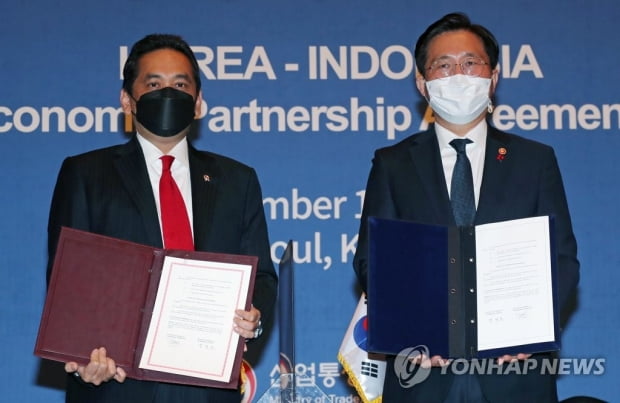Trade Association Report “It should take effect as soon as possible”

When the Korea-Indonesia Comprehensive Economic Partnership Agreement (CEPA) goes into effect, it is analyzed that Korean companies related to plastics, auto parts, and steel will benefit greatly.
According to the report on the’Effects of Korea-Indonesia CEPA Signing’ announced by the Korea International Trade Association on the 3rd, Indonesia’s CEPA signed on December 18 last year, with 92.1% of imported items in Indonesia, and 93.5% of 2019 imports. It was decided to abolish tariffs on items that amount to.
Compared to the level of tariff abolition under the existing ASEAN-Korea Free Trade Agreement (FTA), the level of market openness was increased by 4.7 percentage points in terms of import value and 11.9 percentage points in terms of number of items.
By item, plastic and rubber products and auto parts, which are exported to Indonesia, are subject to tariff-free as soon as CEPA takes effect, and companies in the industry are expected to benefit.
According to the report, “As Indonesia’s population and income continue to grow, stable growth in both the plastics and automobile markets is expected.” did.
In addition, exports of steel products, cotton yarn and centrifugal pumps are expected to increase due to additional tariff cuts.
In particular, for steel products, a standard tax rate of up to 15% was applied in the existing ASEAN-Korea FTA, but when CEPA enters into force, tariffs will be phased out 7 years after the entry into force.
“Indonesia is the world’s fourth-largest population with a population of 270 million and has the largest economic scale in Southeast Asia with a gross domestic product (GDP) of 1.1 trillion dollars,” said Kim Kyung-hwa, a senior researcher at the Korea International Trade Association. The government and the National Assembly should work hard to bring the Indonesian CEPA into effect.”
/yunhap news
Ⓒ Hankyung.com prohibits unauthorized reproduction and redistribution
